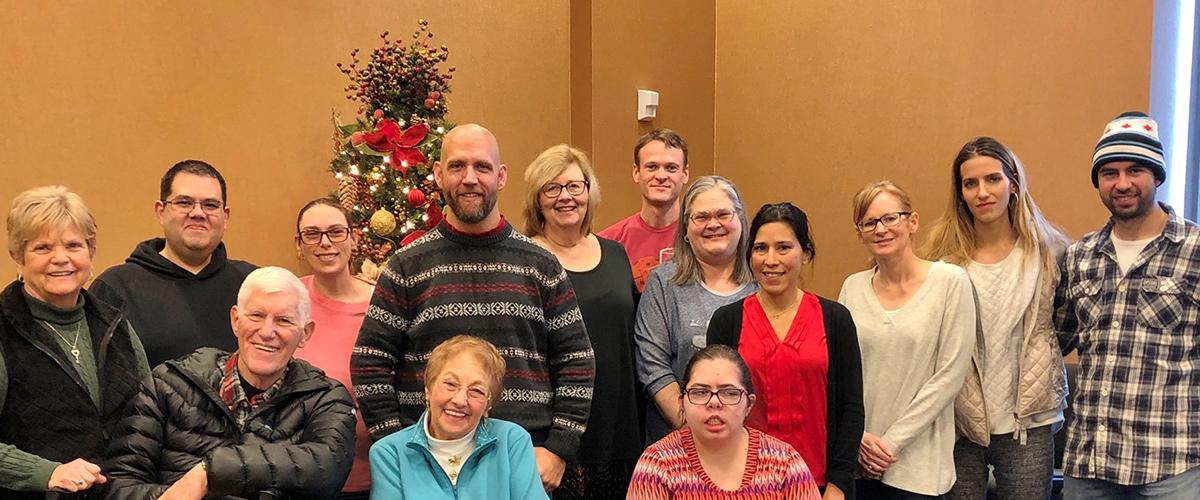Many of you have seen posts on social media about treatments they have received in other countries or heard about through friends, that include everything from dietary aids to gene therapy, and want to know how you can assess the possible benefits and risks of these "treatments." In this complicated therapy environment, how can patients make decisions about whether an available treatment or therapy is safe and effective? How can you tell the quacks from the cures?
In Pursuit of a Cure
MDF is committed to the pursuit of improved Care and a Cure for people living with myotonic dystrophy (DM). We’re a non-profit advocacy organization and there is no other reason for our existence. In pursuit of a cure, we fund research, support infrastructure projects for therapy development, recruit investigators to work on DM, educate drug regulatory agencies, and work with companies to help them see the opportunities and potential for investments in a new therapy for myotonic dystrophy.
Patients and their families know well that the search for a cure, or even a treatment that can mitigate symptoms of DM, is a long and arduous process. We have recently seen the development of IONIS-DMPK-2.5Rx ended because the oligonucleotide drug did not reach its target tissue (skeletal muscle) in concentrations adequate to have a meaningful effect. Fortunately, Ionis has reported that it has alternative compounds that appear to have better tissue-targeting and we hope to see these move toward clinical trials.
Sometimes it’s Complicated
More broadly, we have seen significant recent controversy and lack of agreement regarding therapies developed for other rare diseases, with insurance companies refusing to reimburse for drugs they claim do not have enough scientific evidence to demonstrate a clinically-meaningful effect for patients. We also know that the ‘placebo effect’ where patients report significant therapy benefit when actually on a placebo (a non-active substance with no therapeutic effect), can also complicate the discussion, particularly when a given therapy has a relatively small demonstrable impact.
Stick with What Works
Oligonucleotide drugs can succeed as therapeutics. Biogen and Ionis collaborated on the development of Spinraza for spinal muscular atrophy. The two companies exercised considerable care in development of these drugs and sought FDA approval only after obtaining results from two international, placebo-controlled clinical trials. The key here is that considerable drug effect was demonstrated in a large cohort of patients enrolled in the clinical trials. As a consequence, the drug is now marketed for all types of spinal muscular atrophy and, while the cost of the drug is very high, many families are getting insurance coverage for Spinraza. The evidence had to be there for both therapy approval and insurance company reimbursement.
Achieving a drug that is proven to have a considerable level of effect on measures that are clinically-meaningful to DM patients is a central requirement for both drug approval and reimbursement.
The therapies that we hope to achieve for DM will come only from this evidence-based drug development and approval process. MDF regularly meets with biotechnology and pharmaceutical companies—including ten companies in the last two months—providing information and making the case that DM represents a good investment with a clear pathway to drug approval. Any legitimate clinical trial will be listed in ClinicalTrials.gov, and information about legitimate DM studies and trials will always be circulated by MDF.
Dangers lie in the pursuit of quack “therapies.” A brief Google search will reveal fabulous claims of cures for just about any disease, if the patient will only travel to a developing country, with less regulatory oversight, for the ‘breakthrough’ therapy. Most often, the claims of effectiveness lack substantiation. These “therapies” have certainly not gone through any drug regulatory agency for approval, and often supportive data has not even been published in a reputable scientific or medical journal. They are, to put it bluntly, quack “therapies” that are potentially harmful because safety data is often not there.
To the safety point, even in the U.S., unproven “therapies” that bypass FDA regulations have caused harm. Three women were recently blinded in Florida after receiving stem cell “therapy” injections for macular degeneration.
Do Your Homework
So, to steal from an old saying, ya can’t tell the quacks from the cures without a scorecard. If a DM therapy sounds too good to be true, the people behind it are probably just after your money. The reliable scorecard here is the physician who is knowledgeable of DM. If your doctor or any other reputable physician with an understanding of DM won’t prescribe the treatment, you probably should not be taking it.
MDF is also happy to help you understand whether something is in a legitimate clinical trial, an approved therapy…or not. Browse the resources and tools available on the MDF website or call the MDF Warmline at 415-800-7777.

